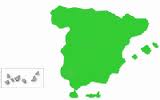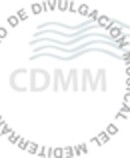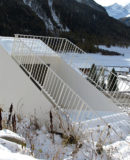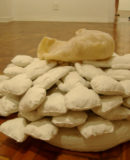"Watch out for the caterpillars!"
 A dangerous insect will come down from the trees during the next months, and you need to be prepared. When you take the dogs for a walk, you can see them hanging from the pine trees as big, white nests: the pine processionary caterpillar. Their official name is Thaumetopoea pityocampa and they live in the pine trees at the Mediterranean Coast. During summer, the moths come up from the ground, they mate, and the females lay their eggs in the top of the pine trees. 30 – 40 days after, around September – October, the caterpillars appear and start building their nests in the trees, each nest contains between 60 – 200 bugs.They leave the nests at night, feeding on different parts of the tree, but don´t leave their host-tree until February onto April when the caterpillars come out of their nests, and climb down to the ground in a long line, hence the name Processionary. When they´ve found an adequate place they bury themselves and form the cocoon, until next summer when a new cycle starts.
A dangerous insect will come down from the trees during the next months, and you need to be prepared. When you take the dogs for a walk, you can see them hanging from the pine trees as big, white nests: the pine processionary caterpillar. Their official name is Thaumetopoea pityocampa and they live in the pine trees at the Mediterranean Coast. During summer, the moths come up from the ground, they mate, and the females lay their eggs in the top of the pine trees. 30 – 40 days after, around September – October, the caterpillars appear and start building their nests in the trees, each nest contains between 60 – 200 bugs.They leave the nests at night, feeding on different parts of the tree, but don´t leave their host-tree until February onto April when the caterpillars come out of their nests, and climb down to the ground in a long line, hence the name Processionary. When they´ve found an adequate place they bury themselves and form the cocoon, until next summer when a new cycle starts.
In nature, the caterpillar-state is the most vulnerable in the life of an insect, why they tend to evolve all kind of defence-mecanisms. The Processionary caterpillar has acquired a layer of hairy-fine needles, which contain a toxic substance released if the needles are broken off. The toxin has got an extremely strong effect, that releases histamine in the body of the victim, where there has been contact with skin or mucosas. This causes a violent allergic reaction, in humans seen as a very itchy rash. The dog is in a much bigger danger, as dogs tend to lick the areas where the caterpillars have passed, or even chew on them, or play with the nests.
Cats seldom get problems, as they are much more cautious. Dogs that have been in contact with a caterpillar, get symptoms very quickly: they run around, desperately scratching themselves in the mouth and on the tongue, dribbles and foams from the mouth, and rapidly a visible swelling of tongue lips and even the whole head occurs. Before rushing to the vets, there is a few things that can be done as a first aid. Wash the dog´s mouth with water, eventually with a hose, no scrubbing! A bit of vinegar dissolved in lukewarm water can help to neutralise the toxin. After this basic help, it is important to get to the vets as quick as possible, as the dog will need cortisone treatment, antibiotics and lots of intravenous fluids. The lucky dogs “only” loose a bit of the tongue, but is the dog severely ill, we sometimes have to put them down as the whole tongue nectrotizes, or the palate or larynx is involved. It is extremely important to treat as soon as possible, as the success rate of the treatment drops with time. So keep an eye on the pine trees during springtime!!!
www.naturvets.com
Disclaimer: The views, opinions and positions expressed within this guest article are those of the author Gunila Pedersen alone and do not represent those of the Marbella Marbella website. The accuracy, completeness and validity of any statements made within this article are not guaranteed. We accept no liability for any errors, omissions or representations. The copyright of this content belongs to Gunila Pedersen and any liability with regards to infringement of intellectual property rights remains with the author.

































